 Commercial soymilk machine
Commercial soymilk machine
¤ veja a versão em português aqui ¤
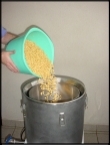 |
|
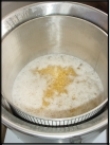 | ||||||||||||||||||||||||||||||||||||||||||
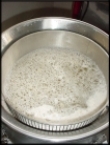 |
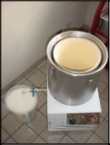 | |||||||||||||||||||||||||||||||||||||||||||
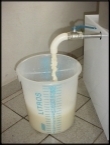 |
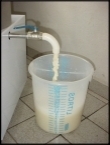 |
|||||||||||||||||||||||||||||||||||||||||||
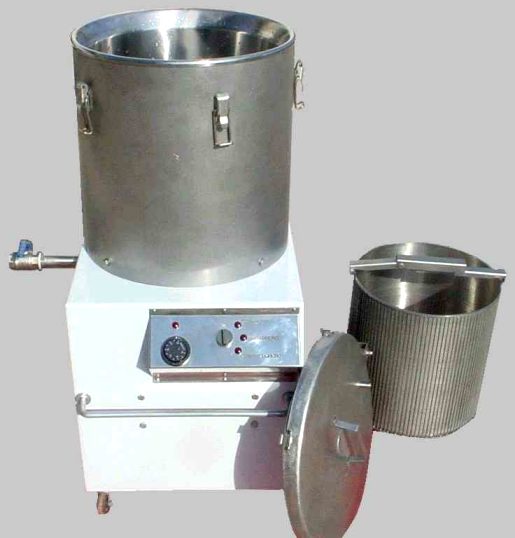
6 basic steps to prepare soymilk with the equipment EPV30/I:
1. Soak 3.8kg of soybeans (either dehulled or not) for about 6 hours in order to hydrate the grains (there's no obligation to pre soak the beans before transforming them into soymilk but we recommend this soaking period in order to obtain a tastier milk).
2. After the soaking period (6 hours), drain the beans and put them inside the machine along with 15 liters of filtered water, close and lock the lid, turn on the heater and set the thermostat to 100°C (heater light will go on). After ±30min the heater light will go off and boiling will take place. Then, let the beans cook inside the machine for about 10 minutes (counted from the boiling beginning).
3. After cooking time (10min), turn off the heater, carefully open the lid and add 15 more liters of water and, at your discretion, 30g of kitchen salt or other flavoring additive. Now you have 30 liters of water and the already cooked beans inside the machine.
4. Replace the lid, lock it and activate the grinding motor for about 10 minutes, operation which will turn the beans into a pulp called okara.
5. After the 10 minutes grinding period and with the grinding motor still on, open the lateral tap in order to let the milk flow out of the machine into a container. Note that only the milk will flow; the okara will be retained by the filter mesh and so it will remain separated inside the drum.
6. Then, when almost all milk is gone through the tap, the last step may be activated, the centrifugation, in order to extract the remaining liquid still trapped inside the pulp (this 5min operation somehow resembles a household laundry machine).
And that's all!
At the end of the process (±60 minutes) we obtain aproximately 30 liters of soymilk and ±8kg of semidry solid residue (okara), which may be easily transformed into soybread and thus provide 100% soybean utilization.
¤ click here to watch a video presentation of the EPV30I in action ¤
Note that fresh soymilk must be kept refrigerated, otherwise its useful life will be seriously compromised. As a reference, the following table summarizes the soymilk expected life according to the temperature (consider that the useful life span also depends on beans hygiene and the overall fabrication process asepsis as well):
| Fresh soymilk life span | |
| Temperature (°C) | Time |
| 30 | 8 hours |
| 10 | 3 days |
| 0 | 2 weeks |
| -10 | 6 months |
| -30 | 2 years |